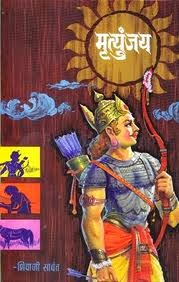Book Review: The Friendless God
 |
| The Friiendless God Pic Courtesy: Goodreads |
Author: S. Anuradha
Publishers: Moonlight Publications
Pages: 350
There is little doubt that India is a country of myriad facets, where the ancient co-exists with the modern. "The Friendless God" is S. Anuradha's debut novel. The Singapore based journalist specialises in equities.
Set against the backdrop of the turbulent demolition of the Babri Masjid and the Ram Janmabhoomi in 1992 for the larger premise, the novel interestingly follows the parallel yet overlapping journeys of an atheist single mother Vaidehi, who is also a struggling Carnatic music exponent and her son Kodanda, who tries to befriend Rama, meets with resistance from his mother Vaidehi. In addition, the book follows the life of an orphan Raman, for whom Rama is a tool to scale ahead in life. It is within this framework that "The Friendless God" traces the lives of the three characters and their equations with the scion of Ikshvaku: Rama.
"The Friendless God" is set in small towns of Andhra Pradesh amidst their domestic roles who end up fighting over their purpose in life. Vaidehi, who received scorn for her incomprehensible pronunciation in Carnatic music tries her best to wean away her son from the art form. Interestingly, there are some terms which find their origins in Carnatic music. For someone who is not familiar with the intricacies of Carnatic music, a glossary might have helped. However, this does not impede or take away anything from the story. Through the book, we are introduced to their parallel and overlapping journeys through differences in their approaches to gardening. The quest to befriend Rama takes a sharp turn when Kodanda leaves home to participate in the Ram Janmabhoomi movement in the distant Ayodhya.
While the conflict is essentially focussed on the Ram Janmabhoomi movement, the book also throws some light on the language debates between Tamil and Telugu. Telugu, interestingly, is often seen as the source language of Carnatic music. In doing so, the book gently weaves an interesting web of complex people, for all of whom Rama becomes a medium to reach their ends: While reading, it is striking that even peripheral characters such as Ramiuddin, a Muslim boatman is sketched out effectively. Ramiuddin struggles with his conscience as he comes to terms with ferrying Rama bhaktas to Ayodhya in his boat on the river Sarayu.
The book is a result of four years of meticulous and extensive research which is reflected in the way the plot unfolds. Beginning in South India, the book begins with a rambling and unhurried pace, which is largely reflective of the way in which the rhythm of life unfolds in rural and semi-urban India. The slow pace of the book impeded my progress as I found it difficult to negotiate the book through the initial 100 pages. However, the book does gain pace when the lives of the three characters come in contact with the Ram Janmabhoomi movement. With an easy going style, the book is a delight to read.
In an interview, the author S. Anuradha mentioned that she was drawn towards the subject of the book due to the myriad possibilities it presented. The Ram Janmabhoomi movement took place a year after the 1991 Economic Reforms, which introduced India to globalisation. The result being a clash between an India that focussed on economic growth and opportunities and a cultural India, where the birthplace of Sri Rama mattered. The book, in its quest to explore its relationship with God, raises some important points such as the fetish for ignoring our Hindu identity in public life: "The Hindu seems to have died, from being a Hindu. It is like the air we breathe, but we don't seem to acknowledge it. In fact, we have made a fetish of ignoring our Hindu identity in public life."
I admit that my introduction to the Ram Janmabhoomi movement was from the left and until four years ago, the very mention of a temple made me deeply uncomfortable. An attempt to read more led me to acknowledge my identity and hence, "The Friendless God" by S. Anuradha was a revelation. It fulfilled my purpose to learn more about the movement. In the latter pages, I found myself agreeing with many important points the author raises in her work. Rooted firmly in ground realities, the book offers an interesting take on a well-known premise that redefined India's association with its culture. I strongly recommend reading the book and will look forward to reading the author's next work.
P.S.: This book was sent to me by the good folks at the Indic Academy, which seeks to preserve, protect and promote Indic civilisational thought, identity and values in exchange for an honest review.


Comments